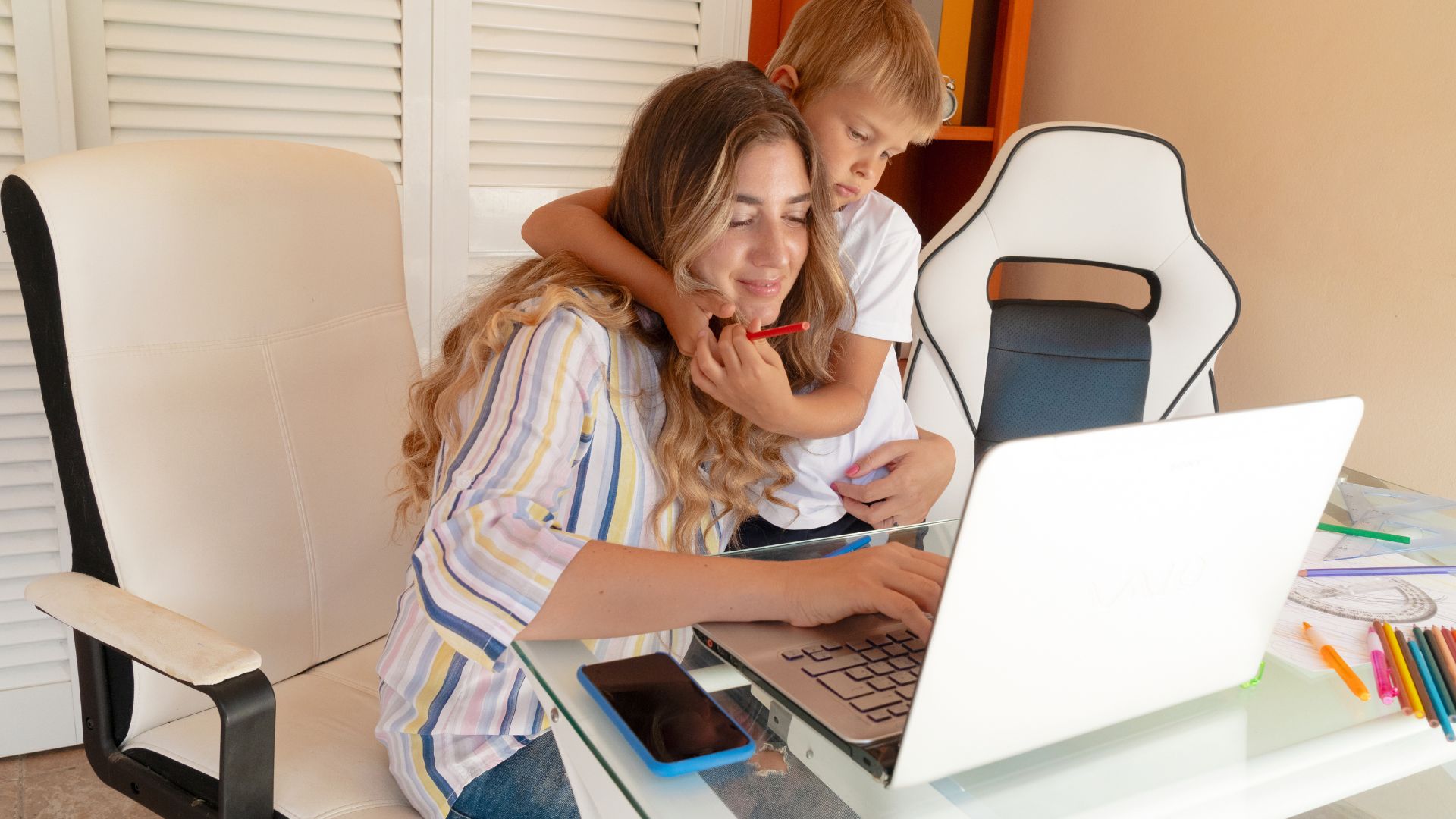Different Sleep Schedules — How to Get Everyone to Sleep
Many families who are welcoming a new baby already have a toddler or preschooler at home. While welcoming a new member of the family is incredibly exciting, it’s also a time of transition. This is especially true where different sleep schedules are concerned. Chances are you probably had your older child’s sleep schedule down pat. In some cases, the good sleep habits of your first may have prompted your decision to have another baby. Especially if you’ve been using The Shuffle.
But what happens when you have to balance two (or more) sleep schedules? The sleep needs of your children at different ages can be overwhelming, but it’s not impossible. This is especially true if you have an older child who is already sleeping well. You’ll want to know about:
- Establish bedtimes/stack bedtimes
- Use timed checks
- Divide and conquer
- Pay attention to naps

If you find that you’re sleep coaching multiples, some of this advice will still apply for you. For more specific help with multiples, this article will help you.
When you first bring a new baby home, you may not encounter many sleep issues, as most newborns sleep the majority of the day (some babies may have issues with reflux or colic that prevent them from sleeping well), with only 1 to 2 hours of awake time between periods of sleep. Your toddler or preschooler may have more trouble adjusting to a new baby in the house, however. It’s okay to revert to The Shuffle if you think you need to remind your older child of good sleep habits and help to ease them back into their routine.
When Will you Start Having Different Sleep Schedules?
It’s really not until your baby begins to enter the world of adult sleep (usually around 6 months) that you will need to begin juggling separate sleep schedules for the new baby, and your older child(ren). As your children grow, they’re both learning new skills and expanding their understanding of the world around them, which includes adjusting to a new sibling. This adjustment and growth leads to a need for a solid flexible routine, good sleep habits, and a bit of sleep coaching.
To make sure that you’re encouraging positive sleep associations from the start, be sure that you have a predictable, reliable bedtime routine.
Wondering what those schedules will look like?
Read: Sample Schedules: Sleep and Naps From 6 Months to Preschool
Establish a Bedtime Routine for BOTH Children
Your bedtime routine for both of your children may not be identical, but it can involve everyone. Maybe your toddler and baby do their bath, teeth brushing, and a story together before bed. Whatever routine you use, be sure that it’s short enough that both children are able to go into bed drowsy but awake.
This works especially well if you have two older children, say two toddlers, or a toddler and a preschooler. If their different sleep schedules are similar enough, do the bedtime routine together. This is also a great time to promote sibling bonding, perhaps by allowing a bath together, or having older sister help little brother into his pajamas.
As an example, I used to read one “baby” book with both of my girls in my younger daughter’s room, and then my older daughter would go to her room and and choose a ‘big girl’ book while I put the baby in the crib. Once I’d settled the baby, I could then go to my older daughter’s room and read with her. It’s important to note that at this point, both of my children knew how to put themselves to sleep.
Do you have a bedtime routine?
Read: Bedtime Routine for Toddlers — Soothing and Predictable
Stack Bedtimes
Depending on the age difference between your children, your toddler may be able to stay up a bit later at night without it affecting her sleep. Doing a portion of the bedtime routine together (maybe your toddler helps you bathe and dress the baby), and then finishing up the baby’s bedtime routine while your toddler quietly plays with a puzzle or a few books in her room. This will allow you to use The Shuffle with the baby, and help to ease the need for running back and forth.
If you have another parent available, get them involved in the bedtime routine so that you aren’t leaving your toddler alone too long. Perhaps they can do bathtime, teeth brushing, and a story as you use The Shuffle with your baby.
After you get the baby settled, you can get your toddler situated and do the final part of her bedtime routine, perhaps a story or some snuggle time, before putting her to bed for the night.
Use Timed Checks
If you find that you aren’t able to fully complete The Shuffle before it’s time to put your toddler to bed (remember, keeping children up later will not guarantee a good night’s sleep…in fact, it normally results in a tired and cranky kid the next day), consider doing timed checks with the children.
To do a timed check, you would begin with your normal Shuffle position, but leave to check on your other child after a certain period of time, say 5 minutes. After checking in, you return to check on the other child. It’s a bit of running (possibly a lot of running) between bedrooms, but this approach is a good choice if there’s only one of you and two (or more) children that need sleep coaching.
Timed checks are just like Ferber’s method. You leave your older child to go and check on baby from the door. Remember, you only go to crib side and pick her up if she is hysterical. You’ll want to decide on the number of minutes you will wait before responding to her cries.
Want to know more about The Shuffle?
Read: The Sleep Lady Shuffle: How to Gently Sleep Train your Baby
 Divide and Conquer
Divide and Conquer
If you have another parent available, sometimes the easiest thing to do is simply divide and conquer. With sleep, this means that one parent takes one child while the other attends to, well, the other child. It allows each child to get individual, undivided attention (and sleep coaching) at bedtime.
Recognize That There is Only One Of You
Many children go through a stage where they only want mommy at bedtime, and this issue can cause issues if mommy has to be with the other child. Generally, mommy is occupied, and then hears protests and cries from the other. It’s difficult and frustrating, but can be curbed. If you gently, but persistently integrate the other parent into the routine, the requests should stop. Just be sure that mom is there for part of the routine to avoid further protestations (maybe mom does the bath and story while the other parent does the rest).
Don’t Run to the Rescue
Another situation where parents find themselves in is one child waking the other. I’ve found that our gut instinct is to run (sometimes quite literally) to the baby who is crying and attempt to soothe them before they can wake their sibling. This is problematic, not only because you’re not giving them the chance to figure out how to self soothe, but also because you’re creating a sleep crutch, or reinforcing an already existing one -your baby will very shortly figure out that if she cries, mommy comes running.
Instead, try going to the child who isn’t crying, but has been awakened by the fussing. Reassure him that everything is okay, and let him know that he can go back to sleep. Then attend to the other child. If you find yourself in this situation all too frequently, consider purchasing a white noise machine to help dull the commotion for your sleeping child.
Educate Your Older Child about Different Sleep Schedules
Most children are able to understand what sleep coaching is, and how it works between 2 ½ and 3 years. If you’re sleep coaching the younger sibling, you may want to sit down with your toddler and explain what you’re doing and why. You may even consider asking them to be the baby’s sleep role model. This will help them to understand why the baby wakes at night crying, and give them the feeling that they can set a good example.
Child won't sleep and you don't know where to start?
There is a gentle, proven method to get a good night's sleep for you and your child...
Be Conscious of Naptimes
When you have a preschooler and a baby, naptimes may be a challenge. What happens when your baby’s naptime coincides with preschool pickup? You may want to consider a carpool, or even teaching your baby to sleep after being transferred from the carseat to the crib, should she fall asleep in the car. If you are unable to successfully transfer the baby into her crib, it’s okay to allow her to complete her nap in the carseat-just be sure to bring it in the house and place it in a safe location (Please do not put it on the table or sofa, it’s just not safe. Your baby’s carseat needs to be stable, and not easily knocked over.) The same idea applies to playdates, which are best scheduled around naps, either in the morning, or after the afternoon nap.
To Combine Naps, or Not?
Some parents may find it helpful to try to adjust their children’s naptimes so that they coincide. A word of caution: if you have a child who may be ready to give up naps or move to quiet time (a 3 or 4 year old), this may not be the best idea, as disrupting their established naptimes may cause more problems than provide solutions. You never want to force your child to give up their nap before she is ready. Doing so will likely result in an overtired, cranky, and uncooperative child, which is not fun for anyone.
If you merge naptimes, be prepared to sleep coach them in the same room for naptime, or you may prefer to do timed checks if they nap in separate rooms, going between rooms to coach both children.
A few final words of advice
When you’re sleep coaching a baby with an older child, tears may be inevitable. I find many parents who are incredibly opposed to crying. That’s understandable, but if you’ve got a baby and a four year old who no longer naps, you may have to deal with some tears. It’s unlikely that you will be able to do The Shuffle for a solid hour without the use of timed checks while your older child plays quietly downstairs. If parents know anything, it’s that when children are awake and quiet, they’re usually up to something. You may have to leave the baby for a few minutes to attend to your older child both at naptimes and at night. Sleep coaching takes time! Having two children who put themselves to sleep peacefully is worth a few challenging weeks.
Remember, you can still do The Shuffle at night even if you need to do timed checks for naps-it works!







